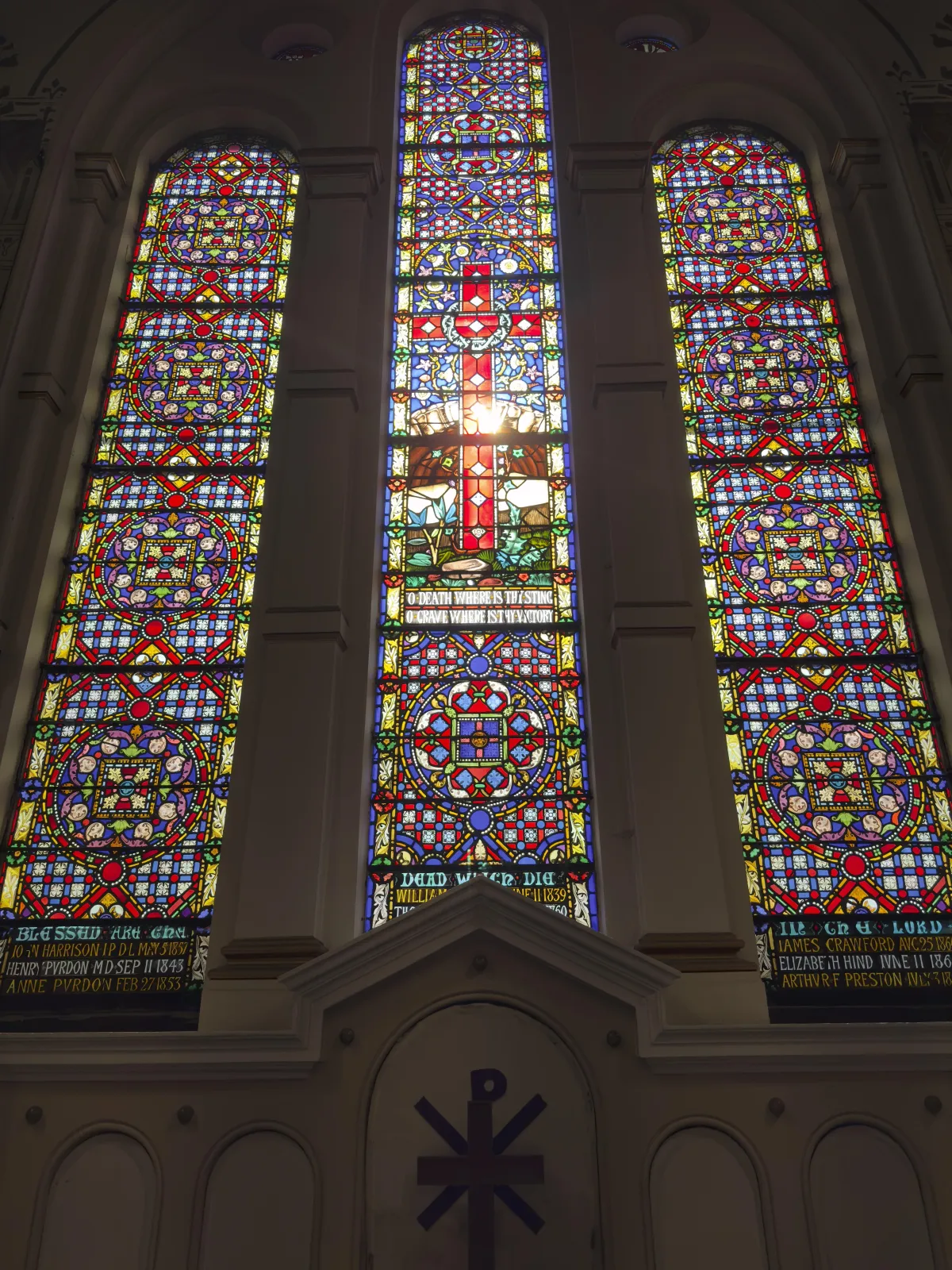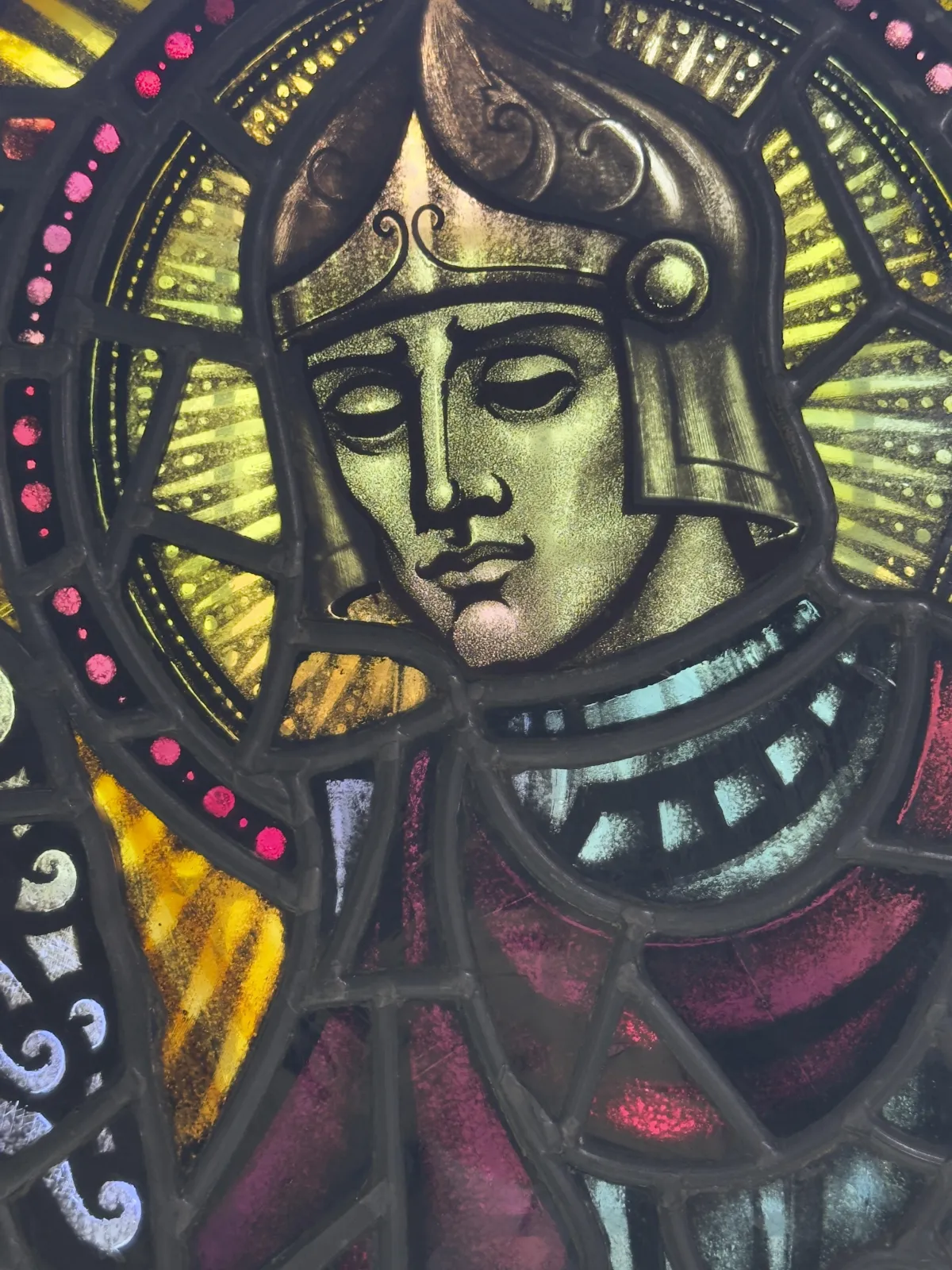An open door in the heart of the city
HISTORY

St George’s is blessed with a deep history and enduring legacy. The site of our church marks the very beginning of Belfast
– the place where settlement first took root and which even gave the city its name. Over 700 years ago, a small chapel known as the
Chapel of the Ford stood here for pilgrims waiting to cross the River Farset’s sandy ford (in Irish Béal Feirste, “mouth of the sand-bank ford”).
By 1613, when Belfast received its royal charter, this humble chapel had become the town’s first parish church, known as the Corporation Church. In 1690, King William of Orange
paused here en route to the Battle of the Boyne, and a famous sermon – “Arise Great King” – was preached in his presence within these walls.
Through centuries of change, war, and growth, a church on this spot has continually ministered to Belfast’s people.
The present church building was constructed in the early 19th century to accommodate the city’s growing population. Designed by the Irish architect John Bowden, St George’s foundation stone was laid in 1813, and it opened for worship in 1816.
The architecture is a fine example of Neoclassical Georgian style with a simple nave-and-chancel layout built from honey-colored Scrabo sandstone. Its most striking exterior feature is the grand Corinthian portico at the front entrance – a four-pillared classical porch that has its own remarkable story.
This portico was originally crafted in 1788 for a nobleman’s mansion (the Earl of Bristol’s Ballyscullion House) and later purchased and transported to Belfast by barge via the Lagan Canal, making it the first barge cargo to arrive in the city.
Today, the portico’s elegant columns (adorned with the coats of arms of Belfast and the Diocese) form a distinctive landmark on High Street.
Inside, the church features a three-sided gallery and an ornate wooden chancel screen, creating an atmosphere of both grandeur and intimacy. With seating for over 500 worshippers, St George’s has been a spacious and graceful house of God for generations.


Through the Victorian era and into the 20th century, St George’s became known for its High Church Anglican tradition – emphasizing the beauty of liturgy and sacraments.
By the early 1900s the parish had developed a distinctly Anglo-Catholic ethos, being “first” in Ireland to introduce ceremonies like Harvest Thanksgiving and the Midnight Eucharist at Christmas.
The church’s history is not only one of worship but also of resilience. In the mid-20th century, as many residents moved to the suburbs, the city-centre congregation diminished – yet St George’s kept its doors open. During the Troubles, our church suffered serious damage on a number of occasions from bombings, but the spirit of St George’s never faltered.
The building was lovingly restored each time, culminating in a major refurbishment in 2000 that renewed the fabric of the church for the new millennium.
Today, St George’s is recognized as a Grade A listed historic building, cherished for its architectural heritage and sacred significance. Our ongoing story is one of continuity and hope: through times of prosperity and peril, worship and music have never ceased on this holy ground.

Join our Mailing List

